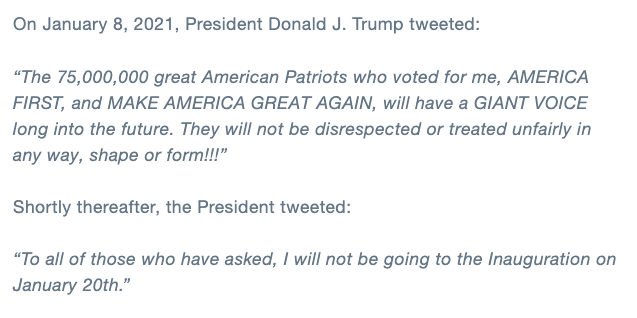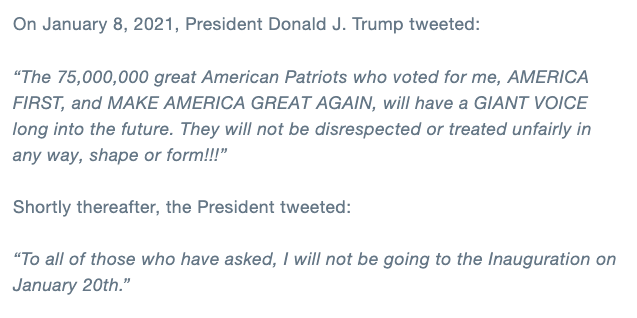NEWS
Why Twitter says it banned President Trump

Twitter permanently banned the U.S. president Friday, taking a dramatic step to limit Trump’s ability to communicate with his followers. That decision, made in light of his encouragement for Wednesday’s violent invasion of the U.S. Capitol, might seem sudden for anyone not particularly familiar with his Twitter presence.
In reality, Twitter gave Trump many, many second chances over his four years as president, keeping him on the platform due to the company’s belief that speech by world leaders is in the public interest, even if it breaks the rules.
Now that Trump’s gone for good, we have a pretty interesting glimpse into the policy decision making that led Twitter to bring the hammer down on Friday. The company first announced Trump’s ban in a series of tweets from its @TwitterSafety account but also linked to a blog post detailing its thinking.
In that deep dive, the company explains that it gave Trump one last chance after suspending and then reinstating his account for violations made on Wednesday. But the following day, a pair of tweets the president made pushed him over the line. Twitter said those tweets, pictured below, were not examined on a standalone basis, but rather in the context of his recent behavior and this week’s events.
“… We have determined that these Tweets are in violation of the Glorification of Violence Policy and the user @realDonaldTrump should be immediately permanently suspended from the service,” Twitter wrote.

Screenshot via Twitter
This is how the company explained its reasoning, point by point:
- “President Trump’s statement that he will not be attending the Inauguration is being received by a number of his supporters as further confirmation that the election was not legitimate and is seen as him disavowing his previous claim made via two Tweets (1, 2) by his Deputy Chief of Staff, Dan Scavino, that there would be an ‘orderly transition’ on January 20th.
- “The second Tweet may also serve as encouragement to those potentially considering violent acts that the Inauguration would be a ‘safe’ target, as he will not be attending.
- “The use of the words ‘American Patriots’ to describe some of his supporters is also being interpreted as support for those committing violent acts at the US Capitol.
- “The mention of his supporters having a ‘GIANT VOICE long into the future’ and that ‘They will not be disrespected or treated unfairly in any way, shape or form!!!’ is being interpreted as further indication that President Trump does not plan to facilitate an ‘orderly transition’ and instead that he plans to continue to support, empower, and shield those who believe he won the election.
- “Plans for future armed protests have already begun proliferating on and off-Twitter, including a proposed secondary attack on the US Capitol and state capitol buildings on January 17, 2021.”
All of that is pretty intuitive, though his most fervent supporters aren’t likely to agree. Ultimately these decisions, as much as they do come down to stated policies, involve a lot of subjective analysis and interpretation. Try as social media companies might to let algorithms make the hard calls for them, the buck stops with a group of humans trying to figure out the best course of action.
Twitter’s explanation here offers a a rare totally transparent glimpse into how social networks decide what stays and what goes. It’s a big move for Twitter — one that many people reasonably believe should have been made months if not years ago — and it’s useful to have what is so often an inscrutable high-level decision making process laid out plainly and publicly for all to see.


















